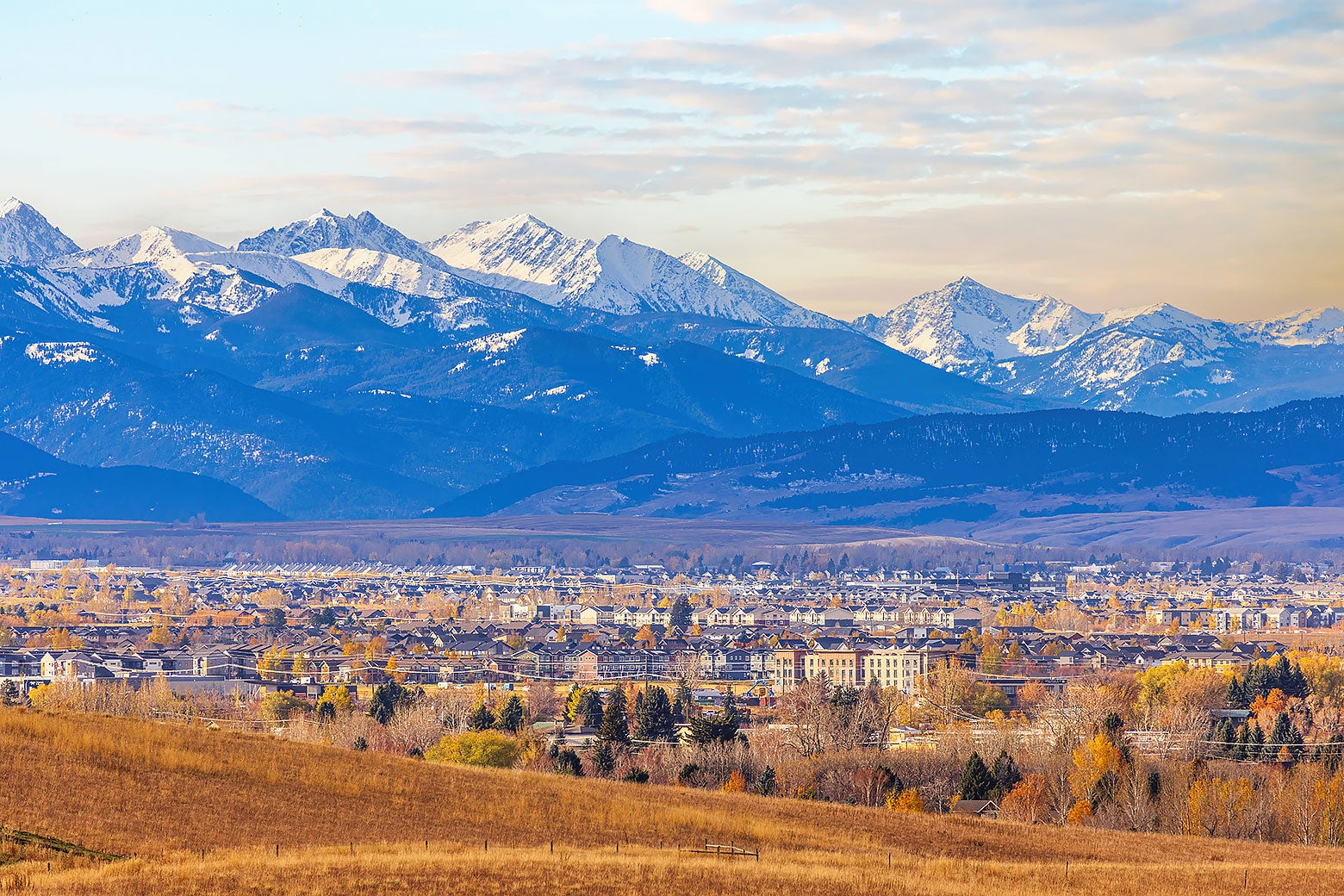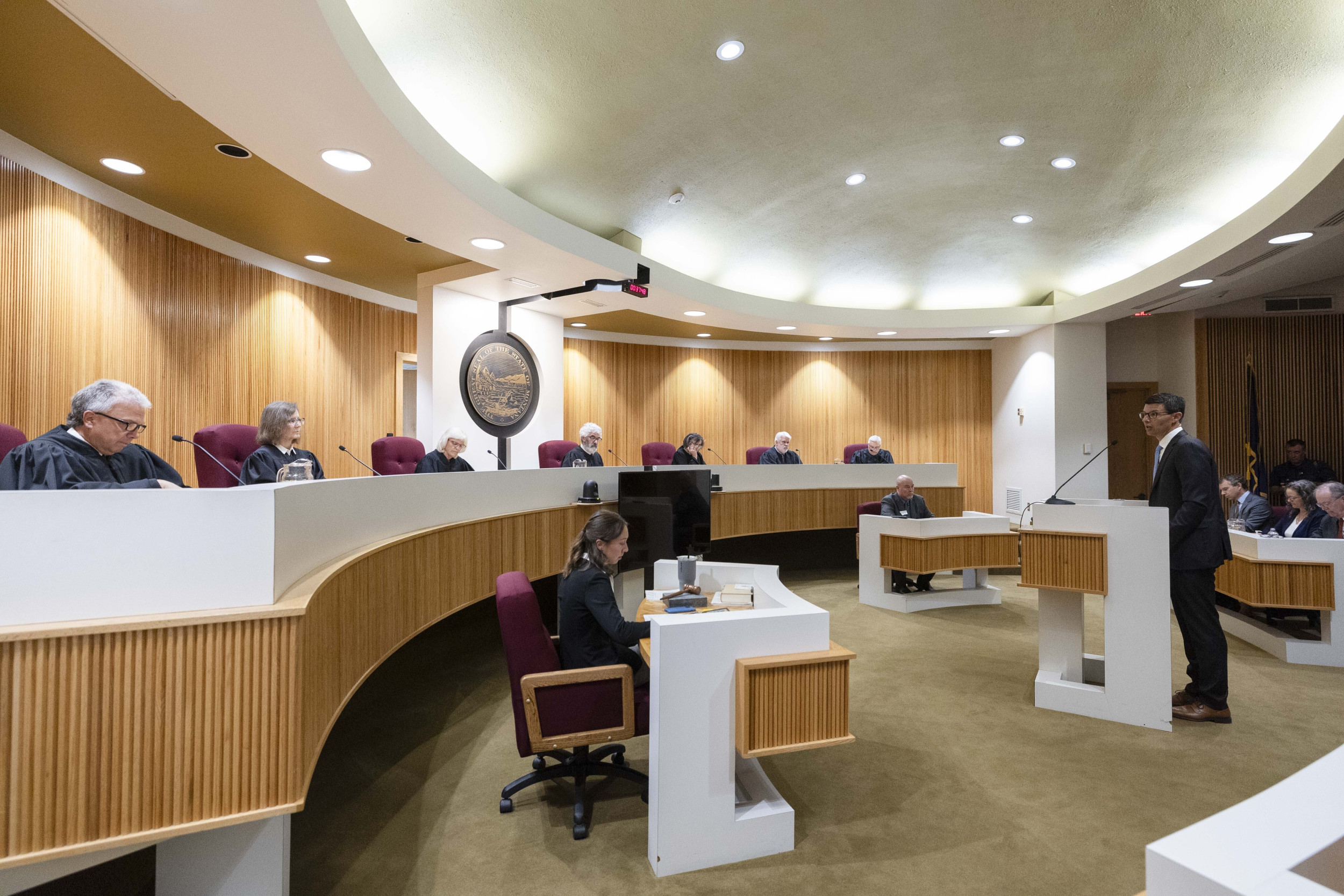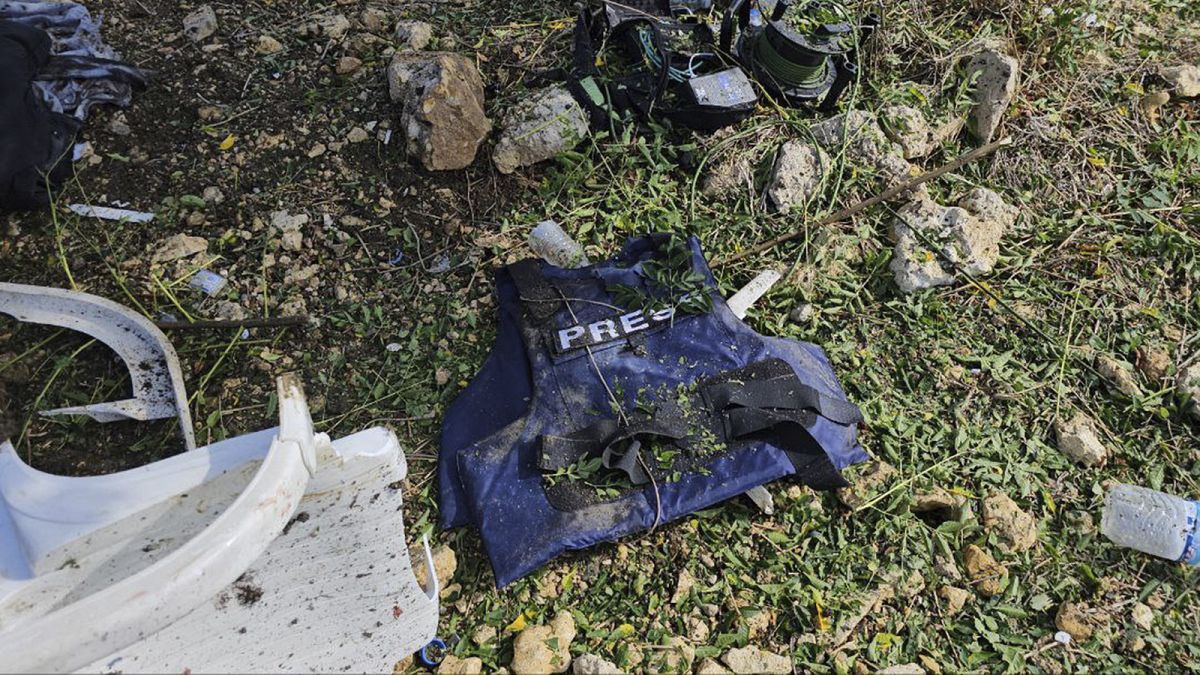Idaho
‘It jeopardizes everything’: Canada coal mines a concern for Kootenai Tribe, Idaho conservation – Idaho Capital Sun

Members of the Kootenai Tribe have spent decades and more than $500 million since the 1980s to restore fish populations in North Idaho, and despite pleas to lawmakers and mining companies, they say nothing is being done to stop the further pollution of the Elk River, where increasing mineral levels threaten fish and human populations.
The Elk River is connected to five mountaintop removal coal mines near Fernie, British Columbia, about two and a half hours from Bonners Ferry, Idaho, in the north panhandle of the state. It feeds into the Kootenai River, which flows through Montana and Idaho. The Elk Valley has one of the highest quality deposits of metallurgical coal in the world, which is the type of coal used in steelmaking.
Long before the U.S. government recognized the Kootenai Tribe of Idaho, Ktunaxa people lived on 27,000 square miles of land across the Rocky Mountains and the Great Plains of the U.S. and Canada. But the establishment of the U.S. and Canadian border split the Ktunaxa people into seven communities: five tribes in British Columbia, and two in the U.S. — the Kootenai Tribe of Idaho, and the Confederated Salish and Kootenai Tribes of the Flathead Reservation in Montana.
Despite the presence of government borders, the Ktunaxa people continue to collaborate in addressing cross-border issues in their community. One of the Ktunaxa Nation’s top concerns is coal mining pollution stemming from British Columbia’s Elk Valley.
How concerns over selenium mining in North Idaho and Canada have grown over time
One mineral – selenium – is the greatest concern for conservation groups, and it is commonly linked with the rock found adjacent to coal. Selenium is found naturally in foods and soil and is a necessary mineral for health, but excessive intake can be toxic. During the mountaintop removal mining process, the mountains are exploded open with dynamite to access the coal, but bringing selenium-rich rock with it. When the rock is exposed to rain and air, the selenium dissolves into nearby waterways.
Genny Hoyle, the environmental director for the Kootenai Tribe, said in 2015, she began noticing an increase in selenium levels below Libby Dam and into Kootenai Lake. In 2015, she said about 0.1 micrograms of selenium per liter were present below Libby Dam. But in November, she said most recent lab reports show that selenium levels were at 1.3 micrograms per liter.
Idaho and Montana’s Department of Environmental Quality have set the selenium limit for the Kootenai River below Libby Dam at 3.1 micrograms per liter. While the Kootenai Tribe is not seeing selenium levels above that threshold, Hoyle said she has noticed a gradual increase over time, which poses a risk to fish populations. Hoyle has been researching the Flathead Basin and northwest Montana since 2006. She also has represented the Confederated Salish and Kootenai Tribes on transboundary mining issues for over a decade.
“We’re seeing exceedances in fish tissue and egg ovary concentrations in a number of our fish species, which is concerning,” she said. “What that highlights is that I don’t think 3.1 (micrograms) is protective of Kootenai River aquatic life.”
Selenium, she said, is sometimes called “the silent killer,” because it works its way up the food chain and can cause reproductive and growth impairments. High selenium levels cause larval egg and larval deformities, so even if eggs hatch, the larvae can be so deformed that they fail to thrive and die, she said.
And Hoyle said some fish, like burbot and white sturgeon, are more sensitive to the presence of selenium than others.
“The Kootenai has such an amazing, diverse ecosystem, and it’s at the cusp of being horribly degraded,” Hoyle said. “The Kootenai Tribe is not against mining. What we would like to see happen is that the appropriate mitigation is implemented at the appropriate scale.”
Mining company says it has implemented measures to mitigate contamination
British Columbia is home to Teck Resources – the second largest seaborne exporter of steelmaking coal, according to the company’s website. Coal mined by Teck Resources is used to make steel for building and transportation infrastructure.
As reported by Canadian news outlet, The Narwhal, Teck’s coal business is the largest employer in the Elk Valley. In 2019, it contributed about $4.9 billion to British Columbia’s GDP, which is roughly 60% of the province’s mining sector GDP.
Teck spokesperson Chris Stannell told the Idaho Capital Sun that in 2013, the company developed the “Elk Valley Water Quality Plan,” a long-term plan designed to stabilize and reverse the trend of selenium and other contaminants in the watershed. The plan, he said, was established in collaboration with U.S. agencies, tribes, local and provincial governments and scientists.
Stannell said Teck has built four water treatment facilities treating 77.5 million liters of water per day, and the company plans to increase its treatment capacity to 150 million liters per day by 2027.
In an email, Stannell said the company removes between 95% to 99% of selenium from treated water.
“We have invested over $1.4 billion towards water quality monitoring, management, research and construction of treatment facilities to date with plans to invest a further $300 to $400 million by the end of 2024,” Stannell said. “We are constantly researching new technology, and have more than 25 research and development projects underway to help reach our water quality goals.”
In a press release from the Ktunaxa Nation in October, leaders proposed a referral of the issue to the International Joint Commission, which resolves water disputes between the U.S. and Canada. The Ktunaxa Nation says a referral to the commission would allow for a scientific assessment of pollution in the watershed and allow both federal governments and the Ktunaxa people to implement water restoration solutions and ensure more regulation of the watershed.
Members of the U.S. Congress have previously expressed concern about selenium pollution, including in 2019, when congressional leaders from Montana, Washington, Alaska and Idaho sent a letter to Canadian officials expressing concern over the “the lack of oversight of Canadian mining projects near multiple transboundary rivers,” States Newsroom previously reported.
The 2019 letter included signatures from U.S. Sens. Jim Risch and Mike Crapo, both Idaho Republicans. But since then, Idaho’s congressional delegation has not provided further support for a referral to the commission.
Tribes seek U.S. help to curb Canadian mining threats to Northwestern states
Risch, a ranking member on the foreign relations committee, did not respond to the Idaho Capital Sun’s question about his stance on the issue.
Erin Sexton, a senior scientist with the University of Montana, said it is hard to watch the contamination issue go on for so long and be “completely ignored.”
“I’m at the point personally and professionally where I feel like it’s time for the governments of Idaho, Montana, the tribes and First Nations and the U.S. and Canada to come together and meaningfully show that they are interested in the health of this watershed,” she said.
Sexton said selenium levels in Koocanusa Reservoir, the U.S.-based reservoir that is part of the Elk River watershed, also exceed the standard, and there are several species of fish with excess selenium in their tissue.
“There isn’t any reason for us to not be encouraging protection of the Kootenai River and Koocanusa Reservoir, because we don’t have any benefits of those mines downstream here,” she said. “It’s just all cost for us.”
Selenium contamination affecting drinking water in local communities
Conservation groups in Canada and Idaho are not satisfied with Teck’s water quality plan.
Randal Macnair, the Elk Valley conservation coordinator for Wildsight, a Canadian conservation organization, said increased selenium contamination has started jeopardizing human health.
“Sparwood, a (British Columbia) community close to the mines, had to have one of the drinking water wells taken offline because it exceeded the selenium limits for human health,” he said in a phone interview. “It’s impacting people in a very real way in our communities.”
Additionally, one of two drinking water wells in Fernie was shut down because of exceeding selenium levels, he said.
Macnair said Teck has failed to properly implement its Elk Valley Water Quality Plan, which he said is clear after the company was fined $60 million in 2021 by the Provincial Court of British Columbia on Friday for polluting waterways in the Elk Valley, and $16 million in February for not building a water treatment facility on time by the required permit date.
“We feel the oversight from Canada’s provincial and federal governments has been inadequate,” he said. “They’ve had two and a half decades to deal with this, and it’s not working. So ourselves and the Ktunaxa have been asking for the International Joint Commission to oversee the entities in this watershed.”
Macnair said that the Elk Valley is similar to parts of North Idaho and Montana, where mining played a large role in the region’s history, but it has since transformed into a tourist hub for outdoor recreation.
“This is a multigenerational problem that we’re talking about,” Macnair said about the mining contamination. “This is something that’s going to be an environmental problem for centuries to come, and it’s going to be impacting people in the Elk Valley, and down into Idaho for centuries to come.”
Jennifer Ekstrom, the North Idaho lakes conservation associate for the Idaho Conservation League, told the Sun that the league is also supporting the Ktunaxa Nation’s request to refer to the International Joint Commission.
“Not only are these mines polluting the water in Montana and Idaho, but these mines are also emitting carbon into the air that is exacerbating climate change,” she said, adding that much of the coal extracted is shipped to countries in Asia.
Ekstrom said she believes now is an important time for the International Joint Commission to get involved in the issue, as another mining corporation, Glencore, is attempting to purchase the coal mines from Teck Resources.
“Before that sale happens, it would be really important to have International Joint Commission involvement to ensure that those protective measures and a plan for cleaning up the pollution is in place,” she said. “This is an archaic industry, and it’s time that we look into a brighter future and make the changes that we need to make to support the health of our planet in perpetuity.”
‘No short-term solution’: Kootenai Tribe fish biologist says
Shawn Young, the fish and wildlife director at the Kootenai Tribe, told the Idaho Capital Sun that when Libby Dam was constructed in 1975, burbot and young white sturgeon fish species were almost entirely wiped out within 10 years. With the help of funding from Bonneville Power and resources from the University of Idaho, the tribe restored burbot populations from 50 to 100 in the mid-90s to 50,000 fish in 2023.
“The Tribe has a connection to nature, the land, and the ecosystem that’s been continuous for so long,” Young said. “There’s a bond, and it’s a part of who they are and who they will be.”
The Kootenai River is also home to white sturgeon, which was listed as an endangered species in 1994. Sturgeon are also included in the Kootenai Tribe’s restoration efforts.
“Sturgeon are extremely important to the Ktunaxa Nation,” he said. “This is the central part of the ecosystem and that’s always been their main ancestral home and territory.”
While the hatchery program has been a success in keeping sturgeon and burbot from extinction in the region, it has not solved the problem of natural recruitment, or surviving without human intervention.
Aside from the challenges posed by dams, Young said the Tribe is witnessing fish contaminated by pollutants from coal mining in the Elk Valley.
Young said that there is no short-term solution to the issue, and that the mining contamination will go on to impact several generations. He is hopeful that the Tribe will find a way for the fish to reproduce naturally, but coal mining in the Elk Valley is a primary threat to that hope.
“It jeopardizes everything that the folks before me, what I’m trying to do, and the folks that are going to come after me,” Young said about coal mining contamination. “It is that serious, so it’s very disappointing that nobody has stepped up to properly address it.”
GET THE MORNING HEADLINES DELIVERED TO YOUR INBOX

Idaho
A stormy weather pattern sets in for Idaho

A stormy weather pattern is expected to persist over the region, with multiple systems bringing precipitation and changing conditions. It all starts tonight with valley rain and snow above 4800 feet.
After a nice Monday afternoon, Another storm will move in for Tuesday. This will bring some more snow to the mountains.
The long-term forecast indicates a continued active weather pattern, with multiple systems bringing significant snow to the ski areas and mostly rain to the Treasure Valley. This is the longest Boise has gone before the first measurable snow since 1958. The latest first snow ever was 1/18/1918.
The weekend is expected to be wet and active, with multiple systems bringing more valley rain and mountains snow.
Here’s a brief look at the forecast:
Tonight: Rain, with lows around 39°F and a 90% chance of precipitation.
Monday: Early morning rain showers give way to increasing sunshine and a very comfortable afternoon, with highs near 50°.
Tuesday: Rain likely, with highs near 51° and a 70% chance of precipitation.
Christmas Day: Mostly sunny, with highs near 42°.
Wednesday Night: Snow, with lows around 33°. A dusting is possible on grassy surfaces. An 80% chance of precipitation.
Thursday: Any snow turns to rain in the valley, with highs near 43° and an 80% chance of precipitation.
Friday: Rain likely, with highs near 44° and a 60% chance of precipitation.
Saturday: Rain likely, with highs near 46° and a 70% chance of precipitation.
Sunday: Rain possible, with highs near 50°.
Idaho
'This is a game-changer.' New indoor soccer facility set to open in east Idaho – East Idaho News

The following is a news release from Portneuf Valley Soccer Club.
POCATELLO — Portneuf Valley Soccer Club is proud to announce the finalization of a four-field indoor soccer facility in Pocatello.
At just over 120,000 square feet, this facility will be the largest of its kind in Idaho. Beyond housing four fields, the complex will serve as the new headquarters for PVSC, featuring administrative offices, a merchandise store, classrooms, and more.
“This facility is a game-changer for soccer in Eastern Idaho,” said Cristie Stone, President of PVSC. “It’s a testament to the vision and commitment of our club, our partners, and the community. We’re investing in our players and are determined to raise the bar of soccer in Idaho.”
PVSC is making a significant investment to enhance the facility’s infrastructure which includes installation of high-quality turf on all four fields, procurement of equipment and technology, upgrades to restrooms, office spaces, and other amenities.
“This facility is phase 1 of a 3-phase strategic development program that will see PVSC become the Number 1 club in the state,” said Paul Baker, who led the development efforts. “We are focused on building a community where our athletes can thrive, families can connect, and the sport we love can continue to grow in eastern Idaho.”
PVSC’s growth ambitions don’t stop here. In addition to the facility, the club will be investing in the professional development of 5 full-time professional coaching staff who will focus on enhancing Youth Development and Competitive programs.
The facility is set to open its doors for a soft opening in January with an official opening ceremony scheduled for early February, offering a transformative space for the soccer community to participate in events, tournaments and leagues.
As PVSC is a 501C3 Non Profit, the club is asking local businesses and families to support the clubs efforts through advertising and sponsorships. Information is available on their website: www.pvscunited.com.
=htmlentities(get_the_title())?>%0D%0A%0D%0A=get_permalink()?>%0D%0A%0D%0A=htmlentities(‘For more stories like this one, be sure to visit https://www.eastidahonews.com/ for all of the latest news, community events and more.’)?>&subject=Check%20out%20this%20story%20from%20EastIdahoNews” class=”fa-stack jDialog”>
Idaho
Project Pinecone aims to recover Idaho’s forests after Wapiti Fire • Utah News Dispatch

One organization is aiming to help forest managers recover the trees lost in one of Idaho’s most devastating fires this summer.
On Nov. 3, the nonprofit Daughters of the American Revolution launched a fundraising campaign to raise money to help restore scorched south and central Idaho forests.
The Wapiti Fire, which began on July 24 by a lightning strike two miles southwest of Grandjean, spanned about 130,000 acres across the Boise National Forest, Sawtooth National Forest and the Salmon-Challis National Forest.
Coined Project Pinecone, the funds raised will be used to hire professional tree climbers for the Sawtooth National Forest who will pick pinecones off trees to harvest mature seeds that will be used to grow and eventually replant trees back into the Sawtooth National Forest.
As of Monday, the Project Pinecone had raised a total of $11,500, including cash and check donations outside of the PayPal fundraiser, lead organizer Janice Beller said.
Beller is the Idaho state leader of the nonprofit. Like others in the organization, she is a descendant of someone who participated in the American Revolution. Conservation is important to the organization and important to her as a fifth generation Idahoan, she told the Idaho Capital Sun.
“Stanley is one of my favorite places in the world, and it has been in my family for years — literally generations,” she said. “When Stanley burned this summer, it just broke my heart and really had a kind of a profound impact on many members within Daughters of the American Revolution.”
‘We have a lot of need for seed’: Sawtooth forester says
Beller said a member of her leadership team reached out to a Stanley forest ranger to ask how they could help restore the forest. That’s when she learned about the shortage in seeds at Lucky Peak Nursery, located off Highway 21 outside of Boise.
Nelson Mills, the timber and silviculture program manager for the Sawtooth National Forest, said his biggest challenge is that forest staff hasn’t collected enough its seeds to replenish its seed bank at Lucky Peak Nursery.
Forest service staff right now have enough seeds to cover 50 to 80 acres of trees suitable for the Stanley area at its nursery, Mills said. However, that is not nearly enough to recover the forest from the Wapiti Fire.
Mills said that wildfires are a natural part of the ecosystem, but catastrophic wildfires like the Wapiti Fire will require artificial tree restoration. Of the 130,000 acres that were burned in the Wapiti Fire, 485 acres have been identified as requiring immediate reforestation need because the seed bed was completely burnt, Mills said. When a more formal assessment is done this winter, forest staff will likely find more acres in need of seedling planting, he said.
In addition to the seed shortage, harvesting pinecones is a complicated, risky and expensive process, Mills said.
The main way to collect pinecone seeds is by hiring professional tree climbers for $2,500 a day. Equipped with harnesses and spurred boots, they climb trees between 75 and 120 feet tall to collect pinecones at the perfect ripeness.
Timing is crucial, as ripeness varies by species and elevation, typically occurring between mid-August to mid-September, Mills said. An unripe pinecone won’t have a viable embryo, an overripe pinecone opens and releases its seeds, and pinecones that have fallen on the ground have been exposed to mold — making the seeds unsuitable for use, he said.
The pinecones are then transferred to Lucky Peak Nursery where they are tested, processed, cleaned and sown to make baby lodgepole pines, ponderosa pines and Douglas firs.
Mills said Project Pinecone creates flexibility for foresters because it is not congressionally appropriated. If it’s not a good pinecone producing year, he said foresters can wait until the next year, or look at other species in a different area.
“Everybody is stepping up through all phases of this reforestation issue to make a solution and grow forests back specifically in the Stanley basin that was affected by the Wapiti Fire,” Mills said. “It is an amazing collaborative effort, and I am just so thankful that people want to get together and grow a forest ecosystem.”
Fundraiser to last until spring 2025
Beller said the fundraiser will last until May, when she plans to hold a ceremony to present the funds to the Stanley community and forest officials. She said she is encouraging individuals to donate, as it is tax deductible, and people who donate more than $10 will receive a wooden magnet with the project’s logo.
The total goal of the project is to raise $15,000, which would pay for six days of pinecone picking.
The fundraiser is partnering with Boise Cascade, which committed to a day’s worth of pinecone picking to the project.
“Boise Cascade’s roots run deep in the state of Idaho, and we are honored to contribute to this incredible project to help restore some of Idaho’s most cherished forest lands that were burned during the brutal fire season of summer 2024,” Boise Cascade Vice President of Human Resources and contributions committee chair Angella Broesch, told the Sun. “As one of the largest producers of wood products in North America and a leading wholesale distributor of building products in the U.S., our company is committed to contributing to responsible forestry practices and protecting our environment.”
Having surpassed the halfway point of its goal, Beller said the successful donations show how much people from Idaho and outside of Idaho care about the Stanley area.
“We’ve heard so many people say that it’s truly the heart of Idaho, and it means a great deal to them and their families,” Beller said. “So to see everybody come together and contribute even just a little to bring it back is very humbling.”
Idaho Capital Sun is part of States Newsroom, a nonprofit news network supported by grants and a coalition of donors as a 501c(3) public charity. Idaho Capital Sun maintains editorial independence. Contact Editor Christina Lords for questions: [email protected].
-

 Politics1 week ago
Politics1 week agoCanadian premier threatens to cut off energy imports to US if Trump imposes tariff on country
-
/cdn.vox-cdn.com/uploads/chorus_asset/file/25789444/1258459915.jpg)
/cdn.vox-cdn.com/uploads/chorus_asset/file/25789444/1258459915.jpg) Technology1 week ago
Technology1 week agoOpenAI cofounder Ilya Sutskever says the way AI is built is about to change
-

 Politics1 week ago
Politics1 week agoU.S. Supreme Court will decide if oil industry may sue to block California's zero-emissions goal
-
/cdn.vox-cdn.com/uploads/chorus_asset/file/25546252/STK169_Mark_Zuckerburg_CVIRGINIA_D.jpg)
/cdn.vox-cdn.com/uploads/chorus_asset/file/25546252/STK169_Mark_Zuckerburg_CVIRGINIA_D.jpg) Technology1 week ago
Technology1 week agoMeta asks the US government to block OpenAI’s switch to a for-profit
-

 Business1 week ago
Business1 week agoFreddie Freeman's World Series walk-off grand slam baseball sells at auction for $1.56 million
-
/cdn.vox-cdn.com/uploads/chorus_asset/file/23951353/STK043_VRG_Illo_N_Barclay_3_Meta.jpg)
/cdn.vox-cdn.com/uploads/chorus_asset/file/23951353/STK043_VRG_Illo_N_Barclay_3_Meta.jpg) Technology1 week ago
Technology1 week agoMeta’s Instagram boss: who posted something matters more in the AI age
-
News1 week ago
East’s wintry mix could make travel dicey. And yes, that was a tornado in Calif.
-
/cdn.vox-cdn.com/uploads/chorus_asset/file/24924653/236780_Google_AntiTrust_Trial_Custom_Art_CVirginia__0003_1.png)
/cdn.vox-cdn.com/uploads/chorus_asset/file/24924653/236780_Google_AntiTrust_Trial_Custom_Art_CVirginia__0003_1.png) Technology2 days ago
Technology2 days agoGoogle’s counteroffer to the government trying to break it up is unbundling Android apps




















